peter Gray’s travels
Volume 2: Austria Narrow Gauge & Industry

Compiled by Andrew Fox



Compiled by Andrew Fox

From an early age, Peter Gray’s interest in railways was encouraged by his father, an employee of the GWR.
Peter’s railway photography began in Basra, Iraq, whilst serving in the Army, at a time when rows of Stanier ‘8Fs’ awaited post-war shipment back to the UK. Returned home from National Service, purchase of a new bicycle led to wider exploration of the photographic opportunities presented by the railways of the West Country. He profited from bank holiday weekends to undertake excursions around Devon and Cornwall, and further afield to places such as Bridgwater North, Bath, Westbury, Weymouth, and even by ferry across the Severn into South Wales.
Eventually, mechanisation took over in the form of two Velocette motorbikes, and in his late fifties a car licence enabled him to him expand his railway photography to include other regions of Britain. His colour photography of lines in Devon, Cornwall and Somerset would become highly regarded through a series of very successful books, whilst his black & white photographs of railways in the south-west were the basis of his very popular weekly ‘Rail Trail’ feature in Torbay’s Herald Express newspaper.
From the mid-1950s Peter’s activities spread to railways beyond Britain, and he began an extensive and varied series of overseas travels, at first around Ireland and Europe (including many Eastern Bloc countries), and later taking in large parts of Africa, North and South America, and Indonesia. His colour slide film of choice was Kodachrome, which guaranteed an absence of grain, with reliable colour reproduction, and has fortunately survived the passage of time with minimal deterioration since he first used it in the late 1950s.
An enthusiastic and active member of the Railway Correspondence & Travel Society, Peter was a familiar presence on the RCTS stand at exhibitions, and many of his overseas travels were undertaken as a member of RCTS tours. For many years he presented his popular slide shows across the country, until a fall left him unable to travel for the last 18 months of his life.
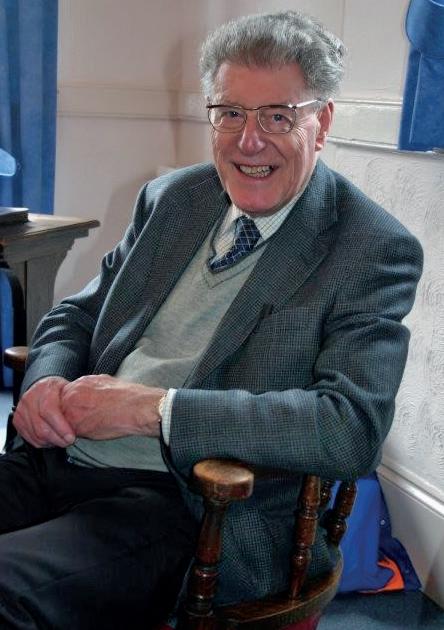
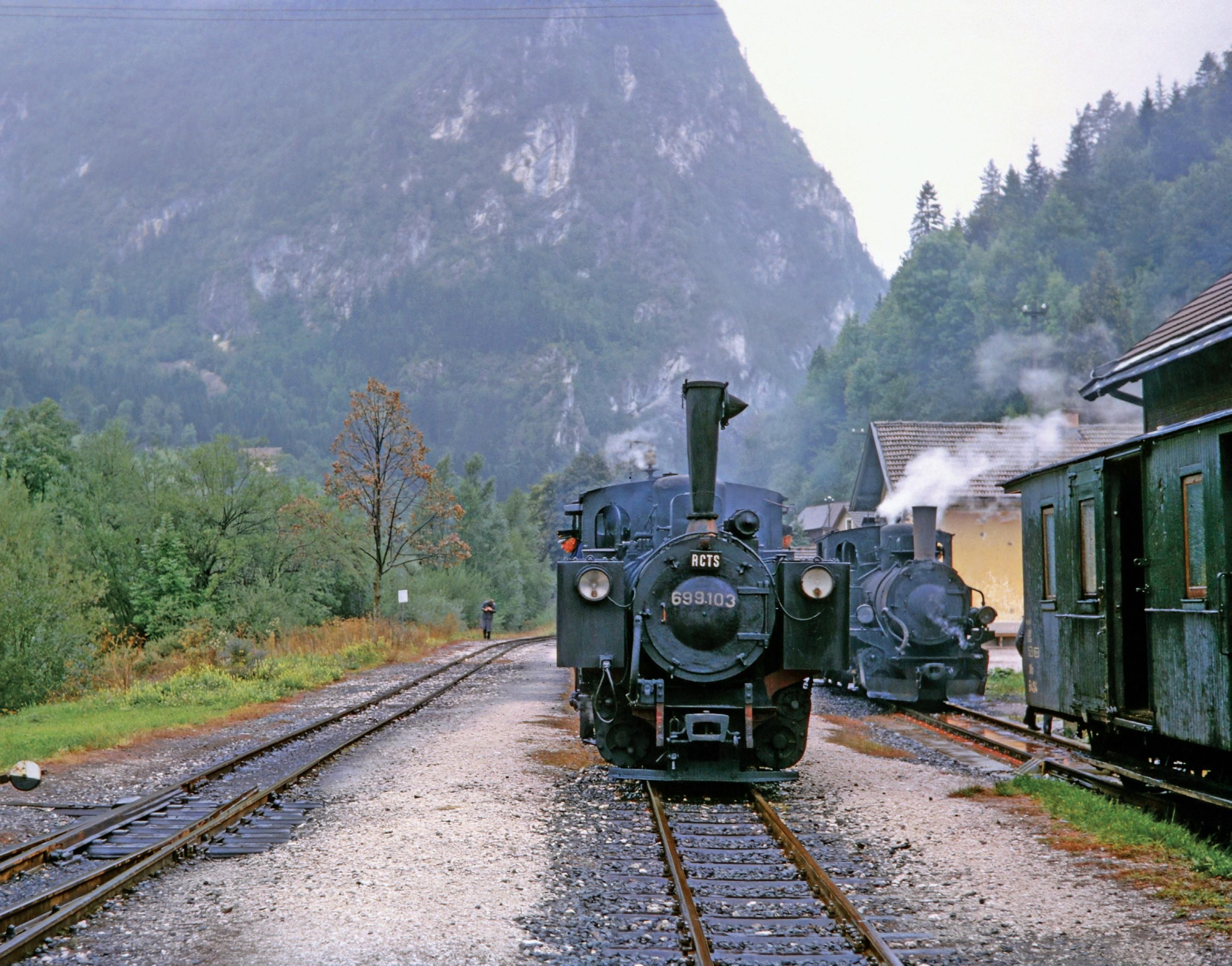
Left: The impressive setting of Eisenkappel station is apparent from this view of Nos 699.103 and 699.01, with No 699.103 running light to the shed for servicing. The contrast in the front profiles of the two classes is heightened by No 699.103 being fitted with an impressively proportioned Giesl ejector, whereas No 699.01 retains its original stovepipe chimney.
Right Top: In this view of No 699.01 at Eisenkappel, the lettering beneath its number on the tank / cab sides states that the locomotive is allocated to Bregenz, on the Bregenzerwaldbahn in Vorarlberg at the western end of Austria. It had been transferred from Bregenz to Völkermarkt-Kühnsdorf in April 1963 to replace No 499.01, which had been taken out of service in January of that year. No 699.01’s last day in traffic would be on 20 September 1967, after which it would be stored at Obergrafendorf.
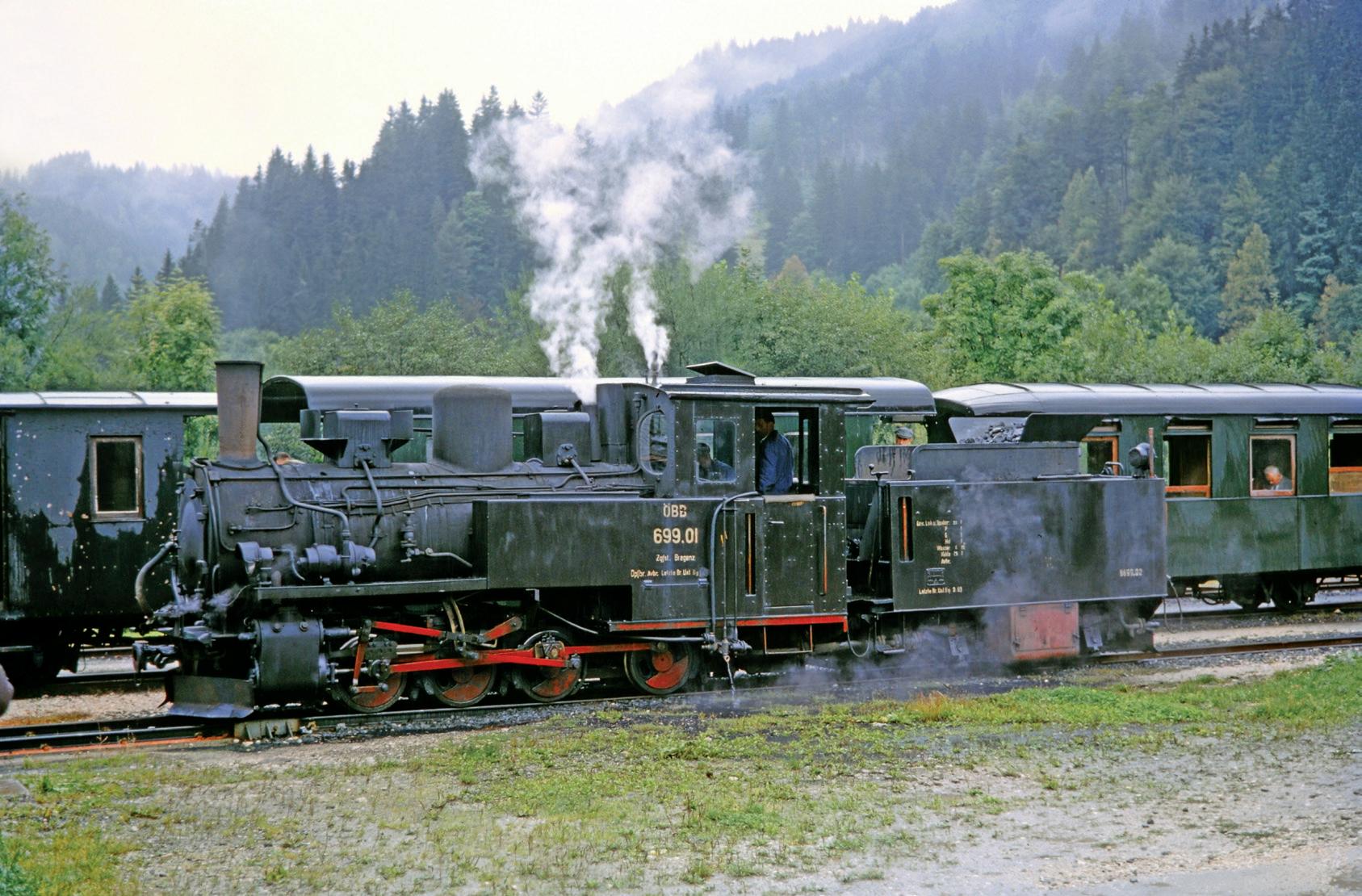
Right Bottom: In this view of Eisenkappel station, No 699.01 has shunted the stock of the train which had been brought in by No 699.103, and now stands in the station awaiting departure. No 699.103 itself is being serviced in the locomotive shed, visible in the distance, prior to joining the front of the train.
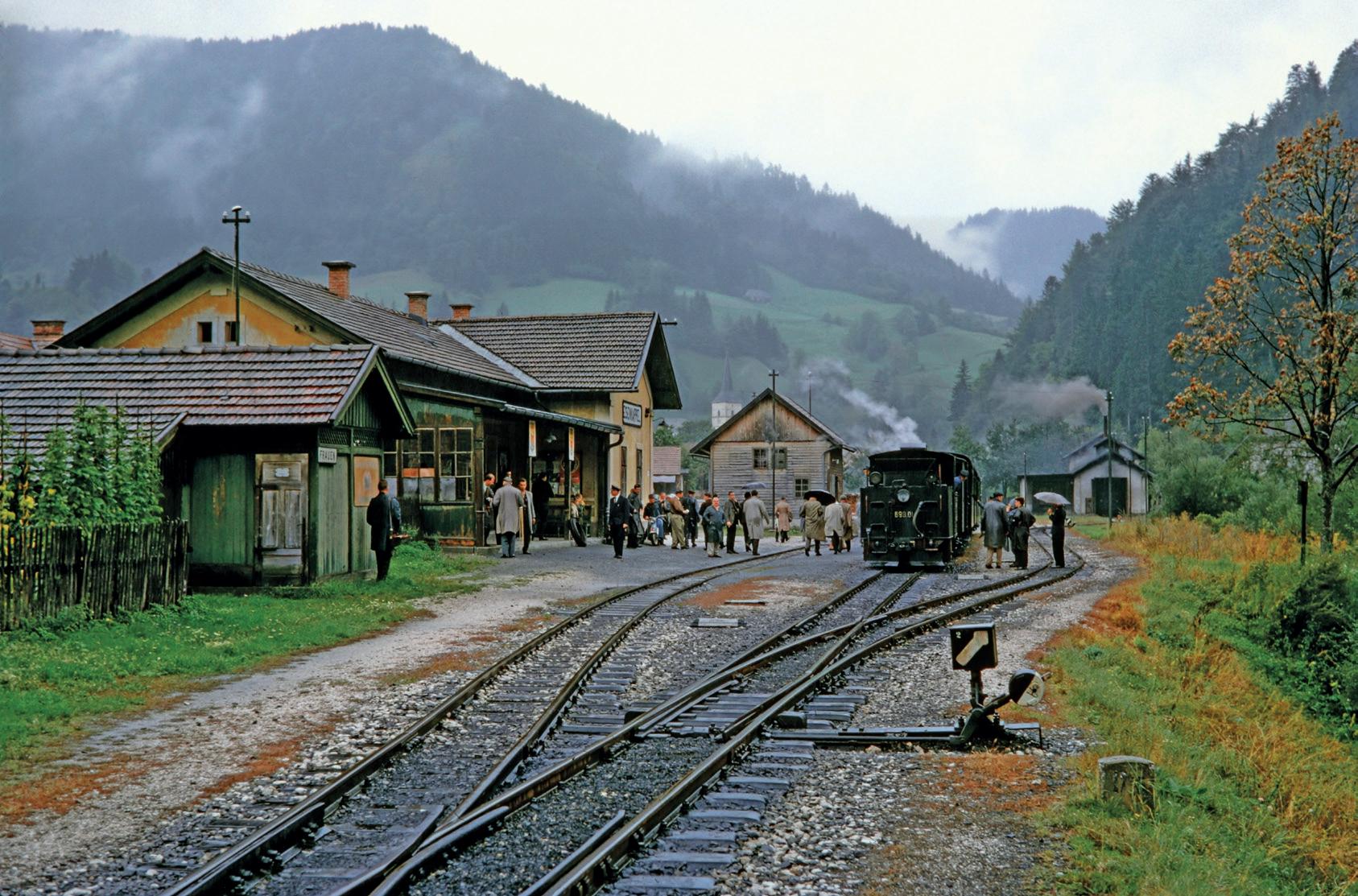
Unzmarkt, to the west of Judenburg on the ÖBB main line to Villach, was the starting point for the Steiermärkische Landesbahnen’s longest line. Opened in 1894, the Murtalbahn ran 76.1km (47½ miles) to Mauterndorf, with its operational centre at Murau, 27km (17 miles) from Unzmarkt. The Murtalbahn was dieselised in the mid-1960s, but steam-hauled excursions commenced in 1969. Declining traffic on the final 11km to Mauterndorf would lead to passenger services beyond Tamsweg being withdrawn in 1973, followed by freight in 1981, but this section would subsequently be preserved.
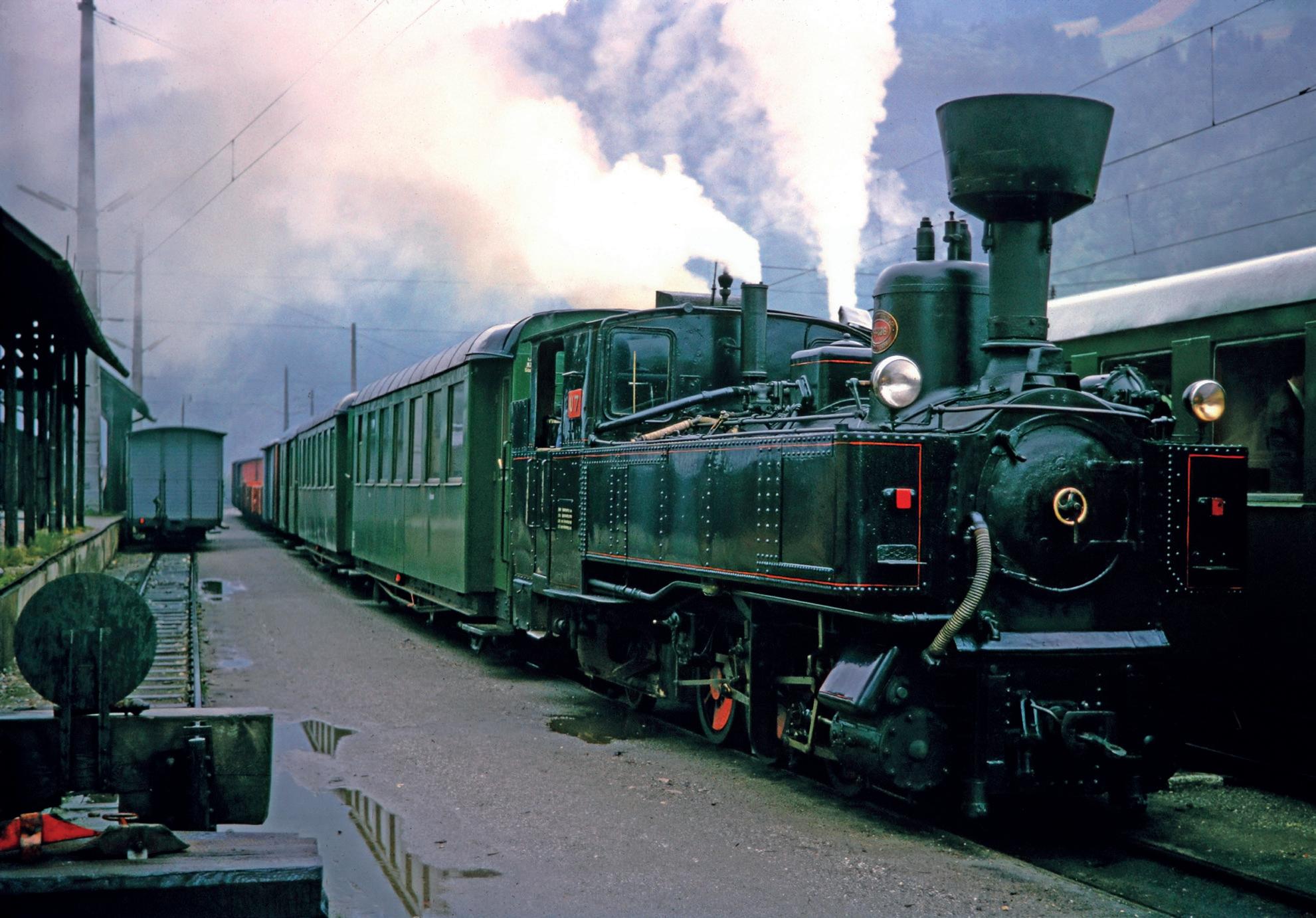
No U7, standing with its train on arrival at Unzmarkt on 5 September 1963, was built for the Murtalbahn by Krauss, Linz in 1899. The ÖBB standard gauge lines lie behind the coach standing beside No U7, to the right-hand side of the picture.

At 8.15am on 5 September 1963, 0-10-0T No Kh 111 awaits departure from Unzmarkt with a two-coach special train for the RCTS. Built by Krauss, Linz in 1930, No Kh 111 was the third development of a design which had originated in 1924 with No Kh 1 for the Vellachtalbahn, and was followed in 1926 by No Kh 101 for the Steiermärkische Landesbahnen. No Kh 111 differed from its predecessors in being fitted with Caprotti valve gear.

WTK No 3 emerges from a tree-lined section of line at the head of the 7.0am from Timelkam, consisting of a long rake of 4-wheel hopper and open wagons, on the damp and misty 9 June 1973, in the final days of steam-only operation on the Ampflwanger Bahn.
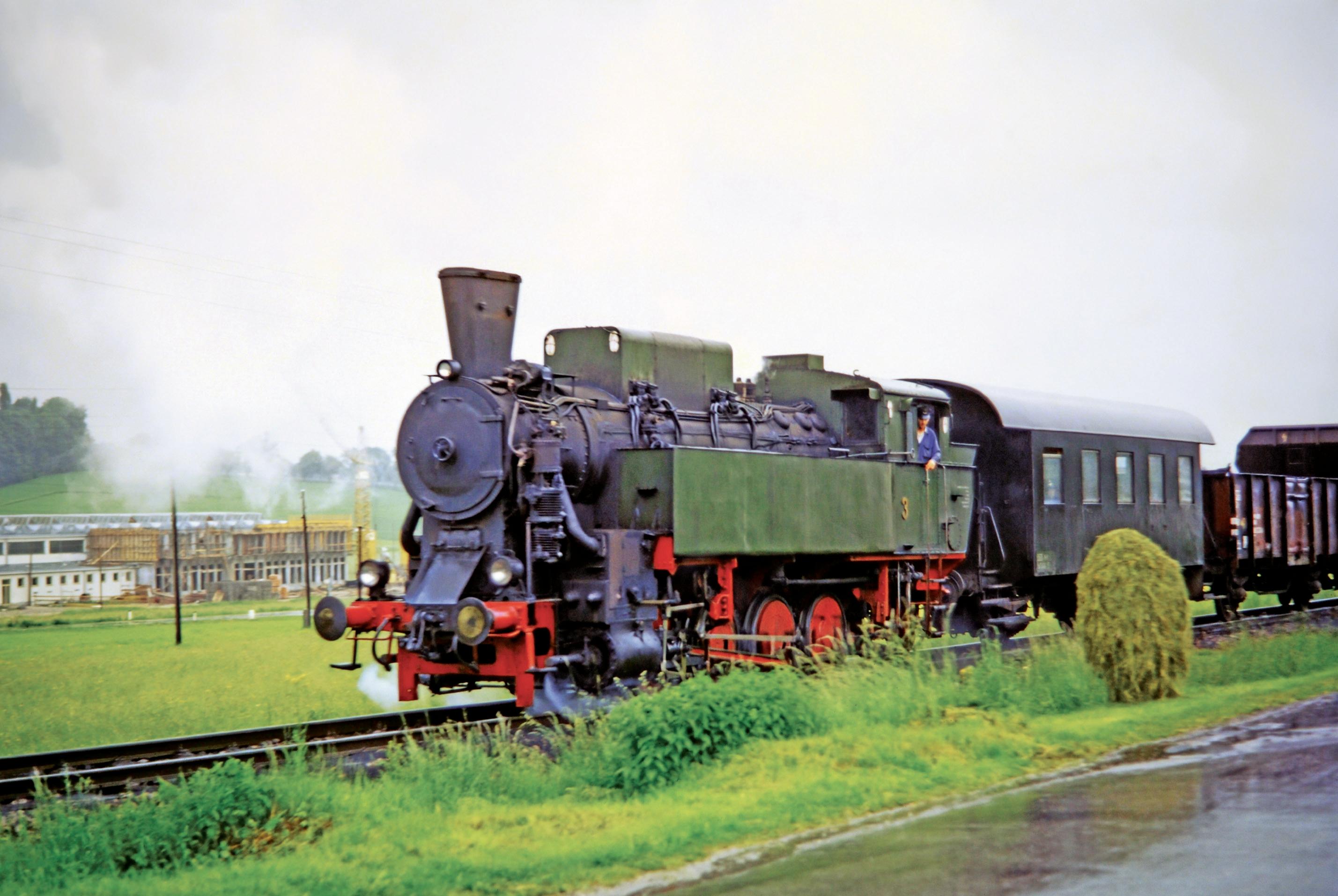
Although also a 0-8-0T, in contrast with the non-superheated Hanomag , No 3 was a more modern, superheated locomotive. Built by Lokomotivfabrik Floridsdorf in 1944, No 3 was almost identical with ÖBB Class 392.
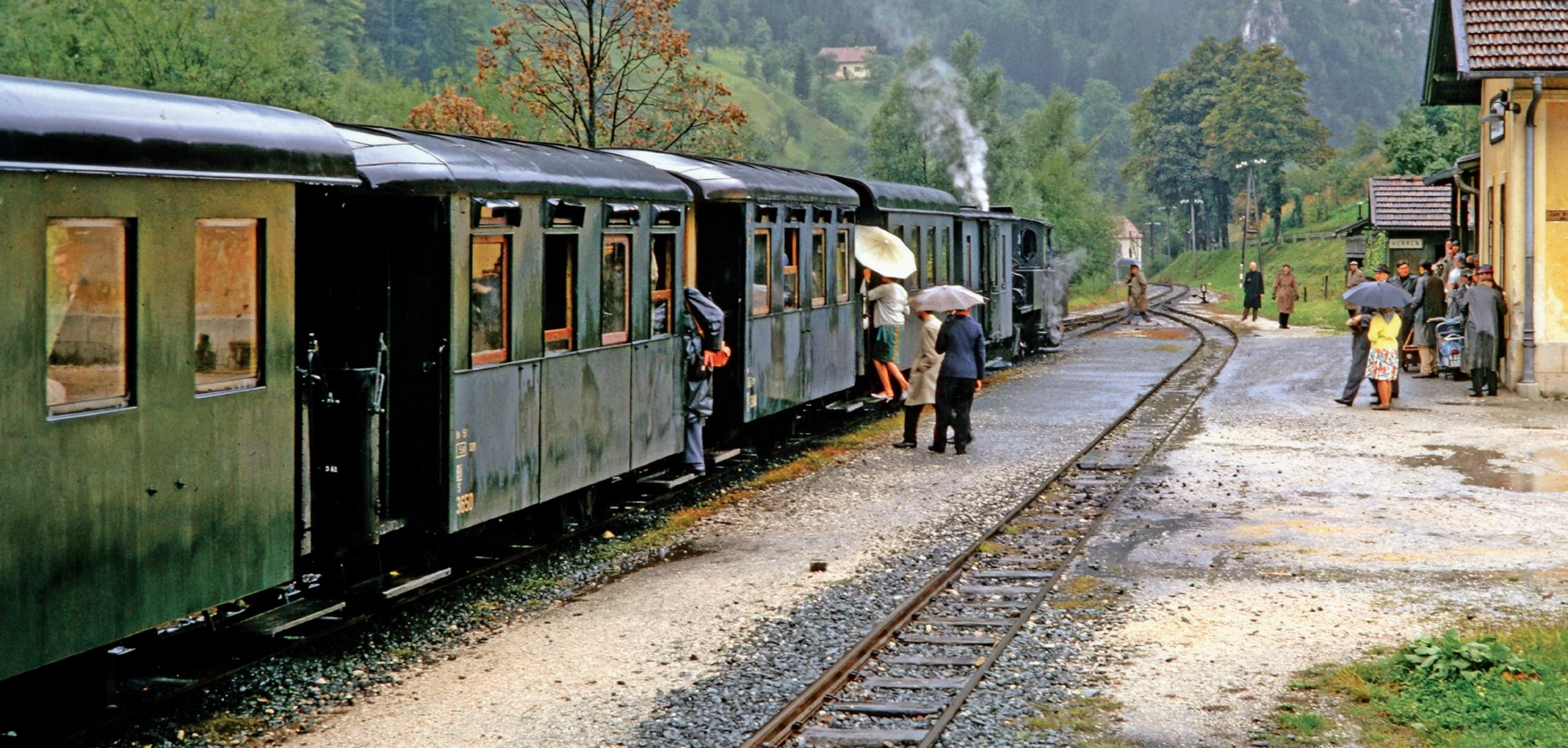
Between 1958 and 1973, Peter Gray visited Austria several times. This volume contains Peter’s remarkable colour photographs of Austria’s narrow gauge and industrial lines, still operated largely by a wide variety of steam classes, in the last few years before the country’s railways were transformed by dieselisation, decline and closures. Over subsequent decades, several of the lines portrayed have sadly disappeared, and those which survive have been transformed by the effects of half a century of rationalisation and modernisation.
Peter’s photographs are a record of a bygone era, allowing us to step back in time to an Austria now long disappeared, but captured for posterity by the lens of an accomplished photographer and enthusiast. The lines depicted in this book include the narrow gauge operations of the ÖBB and the Steiermärkische Landesbahnen, as well as the Zillertalbahn and Achenseebahn, and three contrasting industrial locations.
A companion volume, PETER GRAY’S TRAVELS Volume 1: Austria Standard Gauge covers the country’s standard gauge public lines.

